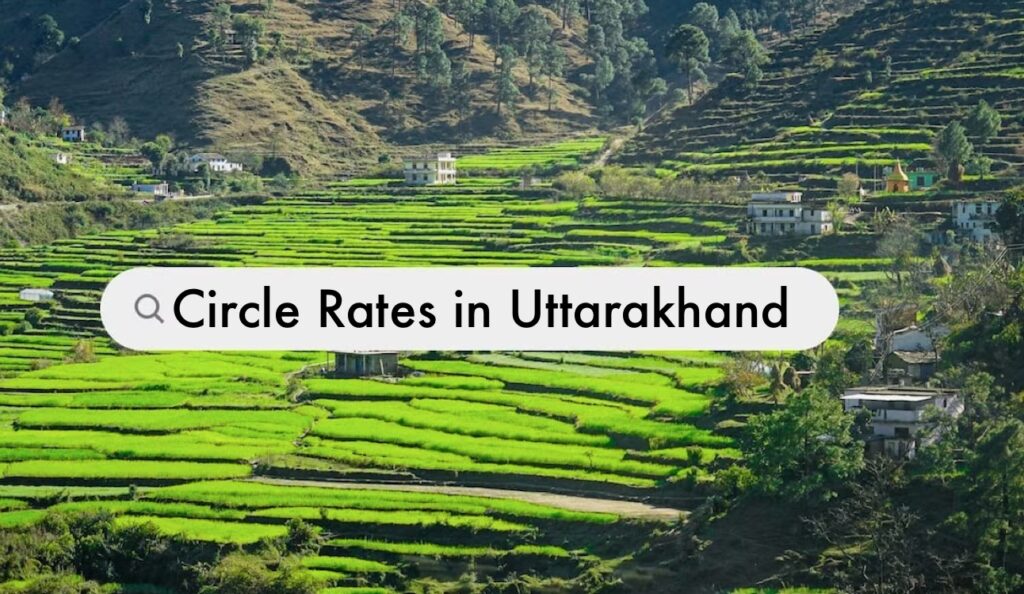Circle rates play a crucial role in real estate transactions, determining the minimum value at which a property can be registered during a sale. In Uttarakhand, the circle rates are set by the local authorities and are a key factor in calculating stamp duty and registration charges. Let’s delve into the details of circle rates in Uttarakhand and their impact on property transactions.
What are Circle Rates?
Circle rates, also known as guidance values or ready reckoner rates, are the minimum rates set by the government for the sale or transfer of a property. These rates vary based on the locality, type of property, and other factors. The main objective is to prevent the undervaluation of properties during transactions and ensure fair revenue collection for the government.
Also Read: How much time does it take for mutation in Uttarakhand?
Factors Influencing Circle Rates in Uttarakhand:
- Location: Circle rates differ across various locations within Uttarakhand. Urban areas, prime localities, and commercial zones generally have higher circle rates compared to rural or less developed areas.
- Type of Property: Residential, commercial, and agricultural properties often have different circle rates. The rates are usually higher for commercial properties due to their potential for generating income.
- Infrastructure Development: Proximity to well-developed infrastructure, amenities, and connectivity can impact circle rates. Areas with better facilities often attract higher circle rates.
- Market Trends: Periodic revisions in circle rates may be influenced by market trends, demand-supply dynamics, and overall economic conditions.
Also Read: Check These Documents Before Buying Property in Uttarakhand
Impact on Property Transactions:
- Stamp Duty Calculation: Circle rates directly influence the calculation of stamp duty during property transactions. Stamp duty is levied on the higher of the property’s actual transaction value and its circle rate.
- Registration Charges: The circle rate is a key factor in determining the registration charges payable during property registration. Property buyers and sellers need to be aware of these charges while budgeting for a transaction.
- Prevention of Undervaluation: By setting a baseline value for properties, circle rates help prevent undervaluation and ensure that transactions are conducted at a fair market value.
Also Read: How to check Uttarakhand Land Records Online?
Checking Circle Rates in Uttarakhand:
Local authorities, such as the sub-registrar’s office or the municipal corporation, typically publish circle rates for different localities. These rates can also be available online on the official government portal. Property buyers and sellers should refer to the latest circle rates applicable in their specific location.
How to Check Property Registry in Uttarakhand
Conclusion:
Understanding circle rates in Uttarakhand is crucial for anyone involved in property transactions. Whether you are a buyer, seller, or real estate investor, being aware of the circle rates applicable to your property can help you make informed decisions and avoid any complications during the transaction process. Stay updated with the latest circulars and announcements from the local authorities to ensure compliance with the prevailing circle rates in Uttarakhand.
The circle rates in Dehradun, Uttarakhand, vary based on the locality. To find the current rates for specific areas, it is recommended to check the official government portal or consult with the local sub-registrar’s office.
Circle rates in Uttarakhand are subject to periodic revisions based on market trends, economic conditions, and other factors. The frequency of revisions can vary, and it is advisable to stay updated with official announcements from the local authorities.
Circle rates primarily affect stamp duty and registration charges during property transactions. While they are not directly linked to property taxes, they play a crucial role in determining the minimum transaction value for tax purposes.
Generally, challenging circle rates is a complex process. However, property owners can approach the local authorities and provide evidence to support their claim if they believe the assigned circle rate is unjustifiably high.
Stamp duty is typically calculated based on the higher of the property’s actual transaction value and its circle rate. The exact calculation may vary, and it is recommended to consult with a local legal professional or use online stamp duty calculators for accurate results.



